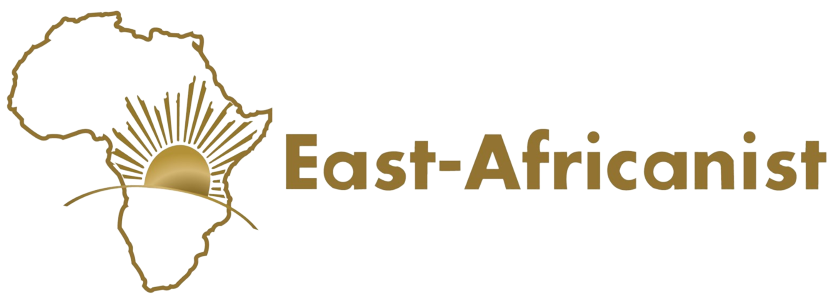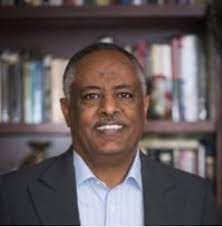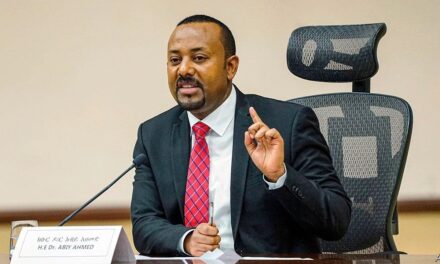By: Kebere Assefa (A practicing attorney and member of the District of Columbia Bar since 1992, Assefa has law degrees from Addis Ababa University, Yale University, and University of Chicago).
Of late, it has become fashionable for some of the Ethiopian opposition to characterize the current status-quo and its critical supporters as unitarians, while anointing themselves as Federalists. This characterization is obscuring rather than enlightening.
The Tigray People’s Liberation Front (TPLF), the main architect behind the current Ethiopian Constitution is now in tatters. With its demise, the design it has imposed on the country is bound to be challenged and changed. This piece attempts to state some of the arguments presented in defense of such a change. The writer is aware that a well-designed constitution that genuinely reflects the will of the people and came after serious deliberation and compromise, ought not be exposed to the vagaries of politics every time one party leaves power and another comes in. The current Constitution has no such pedigree to warrant such status.
The TPLF-led EPRDF came to power following the demise of the military regime in May 1991. It may be said that most Ethiopians had longed for change. They were frustrated by the policy that the military regime pursued, the never-ending war, and the economic hardship that followed. However, it is highly questionable whether the change brought about by the EPRDF was the change that they had longed for.
The system that the TPLF and its surrogates introduced is what can commonly be called Ethnic Federalism, i.e., federalism that employs ethnicity as its main defining element. Pursuant to the ethnic federalism that the TPLF-led EPRDF group introduced, regions were redrawn following ethnic make-up, the regime encouraged the formation of ethnic-based political organizations, and citizens were required to disclose their ethnicity at schools, the workplace and in the residential districts, and they were also made to carry identity documents disclosing the same. In short, ethnic identity was suddenly given prominence over the commonly shared Ethiopian identity that had evolved over centuries of common existence.
Federalism is a system of devolution of power between the center and its constituent elements. It guards against the problem of rule by remote leaders People do not want to be administered by officials who have insufficient identification or knowledge of the constituent element. Even a territorial based federation, broad local administration could ensure that groups enjoy self-rule, language and cultural expression. In addition to facilitating local self-administration, federalism will also enable sub-nits to cooperate and operate at a larger scale with all its attendant advantages. Federalism further encourages competition, experimentation as well as cooperation. In order to extract optimal benefit, several factors ought to be taken into account in determining the size and shape of the sub-units. The need of citizens is not limited to one value, for example, linguistic and cultural self-expression. In addition to linguistic and cultural self-expression, citizens, amongst others, also want their socio-economic needs addressed, liberty respected, grievances expeditiously and properly dispensed with.
The structural and institutional weakness of the federalism put in place by the TPLF-EPRDF is its undue reliance on one of the factors alone, i.e., ethnicity, at the expense of many other needs and factors. It was done with little regard to, among others, such as history, geography, economic viability, accessibility of government service to citizens and the need to form a more perfect union. Close to three decades of experience shows that the system has largely been a failure and calls for change.
PROBLEMS WITH THE CURRENT ETHNIC FEDERALIST SYSTEM
The initial sin with the current constitution put in place by the TPLF and its surrogates was the lack of wide-spread representation and robust debate in its formulation and adoption. Political groups opposed to the EPRDF, including whole ethnic groups perceived as critics, were excluded. From its very framing the Constitution was not inclusive and sufficiently participatory. This has seriously impacted the intellectual input that could have been injected in the framing and thereby influenced the acceptance and longevity of the constitution that came out of the exercise.
TPLF and its surrogates determined the size, shape and number of sub-units making up the Federation. It was an opportunist move designed to validate their booty and claims. A glaring case at hand is the incorporation into Tigray of large swaths of land in Wolkait Tegede, Tselemt, Kafta-Humera from Gondar and Raya from Wollo with no regard to the wishes and aspirations of the inhabitants. Many such adjustments were made to reward potential allies and penalize perceived enemies. Such forced acquisition has now become a challenge to the governing Prosperity Party and how it is going to resolve the competing claims is yet to be seen. No wonder a constitution not borne of serious deliberation and compromise is bound to be challenged as soon as the balance of power changes. The Constitution is challenged on various fronts.
First, it unduly builds on differences rather than common values and aspirations. The Constitution, in its preamble, states that independent “nations, nationalities, and peoples” have come together and consented to form a federation. This is patently false. These “nations, nationalities and peoples” were so designated by the TPLF-led leadership and had no juridical existence prior to such baptism. The constituent elements lived for generations under a common administration. Citizens, goods and services moved from one area to the other without any hinderance whatsoever. It appears that what influenced EPRDF’s characterization is its interest of validating its booty referenced above.
Contrast this with the formation of the United States. Before their Union, the thirteen American colonies who formed the United States of America had independent charters and had nothing as such that bound them together except their allegiance to the royal power in England. Yet unlike the EPRDF architects of the current Ethiopian Constitution, they were visionaries and started their Constitution with the preamble “we the people”. What a false and divisive narrative to begin a constitutional project.
It is a truism that the origins of most states involve aggression and oppression at some point in the past. Yet it is uncommon to include this in a preamble of a document that is forward looking and is expected to symbolize unity. The contrary is what we find in EPRDF’s constitution. This again is a ploy to enshrine its long-held narrative of oppressor/oppressed peoples, fan animosity, pit one ethnic group against another and thus prolong its minority rule.
As indicated earlier on, it is ethnicity that informs the structure of EPRDF’s constitution. Regional states, which are the building blocks of the federation, have been named after a certain ethnic group. If considered an ally that ethnic group may not even constitute a majority in the region. Yet, it could be used as a holdout if its vote is needed during critical times such as, for instance, efforts to amend important provisions of the constitution.
The regions so created have literally built ethnic walls. Many who lived and worked their entire lives in a region have been evicted and their property taken away because they are considered outsiders in the region that is ethnically defined. They have suddenly been transformed from full-fledged citizens into strangers. Alas the aspiration of building a common economy is curtailed and the advantage of directing labor and capital to its highest valued use is lost. Also lost is healthy competition among the regions if free mobility was to be allowed. In a workable federation where interstate commerce is unhampered, states compete to attract citizens, their labor and capital. Free mobility would not only bring about economic gains, but also serves to protect one’s liberty. A citizen who feels a sub-unit is tyrannical can easily emigrate and settle in another sub-unit where he thinks his liberty will be respected. All this is lost thanks to the ethnic federalism that has been put in place
The overemphasis and overuse of ethnicity has heightened ethnic consciousness and engendered ethnic conflict at a scale hitherto unheard of. The country ranks at the top in the number of internally displaced people in the continent. Surely, something is wrong with the system.
The American Constitution is seen in high regard by many and is regarded as a pioneer project as far as written constitutions are concerned. What bestowed it such regard and longevity? A primary factor is its democratic pedigree. The constituting states were able to send the best and brightest of their sons to conduct a robust debate and draft the constitution that was submitted to popular vote before their respective state conventions. Many who did not have a right to vote were given the right to vote for the first time. What was required to form the union was the assent of nine states out of thirteen. Indeed, at its ratification Rhode Island and North Carolina were not part of the union.
The American Constitution further incorporated several factors that enabled the formation of a healthy federation that stretched from coast to coast. These include the privileges and immunities clause that treats a visitor from one state as a full-fledge citizen in another thus encouraging free mobility with all its attendant gains. The contrast with the Ethiopian case is stark. It is citizens who were born in the subunits who are being considered as strangers on account of their ethnicity and subjected to forcible eviction. The American Constitution further incorporates the Interstate Commerce Clause that grants the power to regulate interstate commerce to the federal government not to the subunits. This facilitates free mobility of citizens, goods and services from one sub-unit to another unhampered. Here again, ethnic federalism in Ethiopia has at times resulted in the imposition of tariffs and the blocking of roads connecting sub-units to one another. On several occasions leaders of ethnic based organizations have been heard of threatening to use blocking of roads as a weapon in their demands against the central authorities and/or another sub-unit with whom they have disagreements.
Contrary to most constitutions in the world, a salient feature of the Ethiopian Constitution is the incorporation of a right to secede under the infamous Article 39 of the constitution. I argue that the inclusion of such a right in the constitution places the country on a precarious foundation and negatively impacts its economic development. While the ill-effects of having such a right in a constitution is glaringly clear, its usefulness is highly suspect and dubious.
The inclusion of a right to secession will create an opportunity for sub-units to engage in blackmailing and strategic behavior by threatening to exercise the right, seeking undue benefits or diminish burdens on matters that are technically unrelated to the particular question. Such threats often come from sub-units that think that they will do better alone out of economic self-interest. This raises not only moral questions but is of questionable utility to any sub-unit as such in a long run. A sub-unit that is a net recipient of subsidies may turn out to be the more affluent down the road. Hence, going it alone may be tantamount to “putting all one’s egg in one’s basket.” This, in turn, will endanger the normal functioning of the political process. The Constitution should rather have been used to establish fixed and stable arrangements among sub-unity by which they order their affairs. Thus, by resolving the above concerns, waiving the inclusion of the right of secession in a constitution, has many benefits for the constituent elements as a whole.
On the other hand, a right to secession in a constitution is hardly a justiciable right enforced by the courts. A right not enforceable by courts is hardly a right either. Hence, why include it in a constitution with all its negative implications? A well- functioning constitution is expected to address the grievances and concerns of all subunits within the system and obviate their resort to secession. In this sense, secession only shows the failure of the constitution not its vindication. As a last resort, even if such a right is not included in the constitution, there is always the possibility of having a negotiated settlement or resort to a revolution.
Another salient weakness of the Ethiopian Constitution is its resistance to serious amendments. Added to the haphazard creation of the constituent elements, a small state with hundreds of thousands of inhabitants is given veto power to block amendments desired by tens of millions. No wonder that this was designed to validate and ensure the long-term existence of ill-gotten gains by the powers that determined the process and substance of the constitution.
In contrast, the American Constitution has made constitutional amendments quite possible, though more onerous than legislative measures, and that for very good reasons that we do not dwell on here. Indeed, it is the dozens of amendments that it has undergone reflecting the changing times and correcting the historic injustices that it originally embodied that gave the American Constitution its vibrancy.
OVERALL ASSESSMENT
The overall performance of the constitution has, however, been dismal if not disastrous. Federalism both vertical and horizontal has been a failure. States have increasingly challenged the prerogative of the federal government. A case in point that elucidates the failure of the vertical federalism put in place is the recent unprovoked and unprecedented attack of forces of the Northern Command of the Ethiopian Defense Forces (EDF) by special forces and militia belonging to the regional government in tandem with renegade elements of Tigrayan origin in the EDF. The attack was preceded by undue interference of the regional government and forces in the day-to-day operation of the EDF, an area universally left to federal power and jurisdiction. The utilization of ethnicity as the main organizing principle had deformed its smooth operation.
A salient feature of the failure of the horizontal federalism that governs the relationship between sister states is the now common killings of thousands and dislocation of millions of citizens on account of their ethnic identity. Most of the evictees are natives to the regions they are evicted from and it is the only place that they know of. This amply demonstrates the dangers of using ethnicity as the sole or main factor in organizing a federation.
The TPLF has been largely ousted from power since 2018 and its military might have largely been degraded in the war that it has recently provoked. Though defeated politically and militarily, its ideology lingers through the Constitution that it has put in place.
Nearly three decades of its implementation has amply demonstrated that the Ethiopian Constitution has not bode well for our country. Its weakness has been made worse by its inbuilt mechanism of blocking amendments. A nation of over a hundred million people ought not be taken captive by a document put in place by an unscrupulous group, i.e., the TPLF and its accomplices. As the founders of the American Constitution had put away with the Articles of Confederation that had made itself almost unamendable by giving veto power to any of the thirteen colonies, and came up with the Constitution that has lent itself to amendments that furthered more liberty and widened democracy, it is high time that Ethiopians, too, shall start debate on the framing of a new constitution that would take into account their geopolitical interest, foster fraternity among members of its multitude linguistic groups, enhance economic integration among its sub-units, and neighboring countries at large. Shall we think of breaking up the larger ethnically defined regions into manageable and more responsive units? How efficient and responsive to put together Northern Shoa and Northern Gondar; Eastern Hararghe and Western Wollega? Shall we ban ethnic-based organizations? Shall we do away with regional special forces? Shall we ban ascribing ethnic names to sub-units? These and similar questions ought to examine in view of striking the right balance between the powers of the federal government and the needs and aspirations of the sub-units for self-rule, linguistic and cultural expression while at the same time facilitating the common good.
It has been announced that national and regional elections that have been postponed as the result of the covid-19 pandemic will be held sometime in August of 2021. How are the aspirations of the citizenry to be met given the shortcomings of the constitution that we have partially attempted to describe above? Which should come first? This and similar questions remain.





